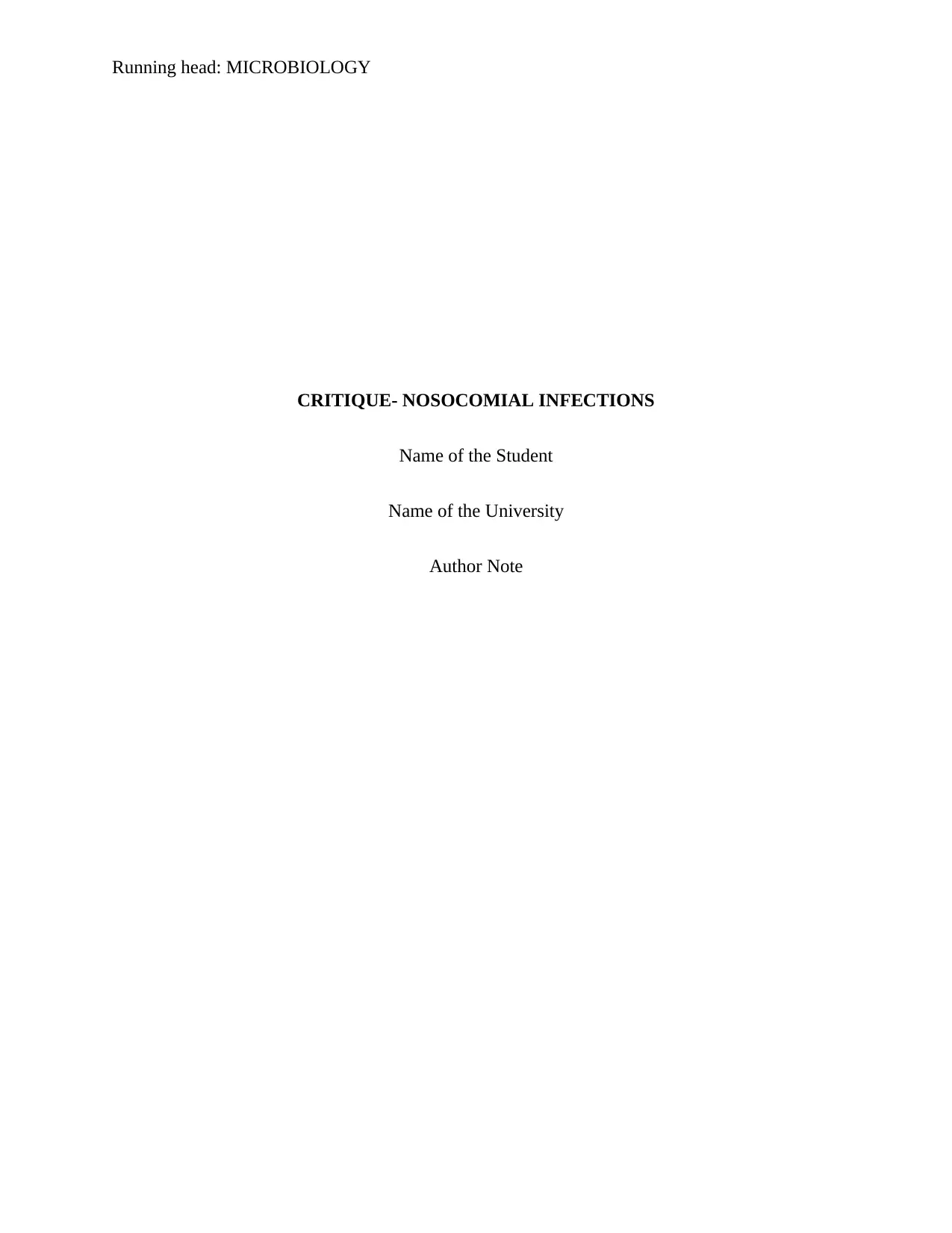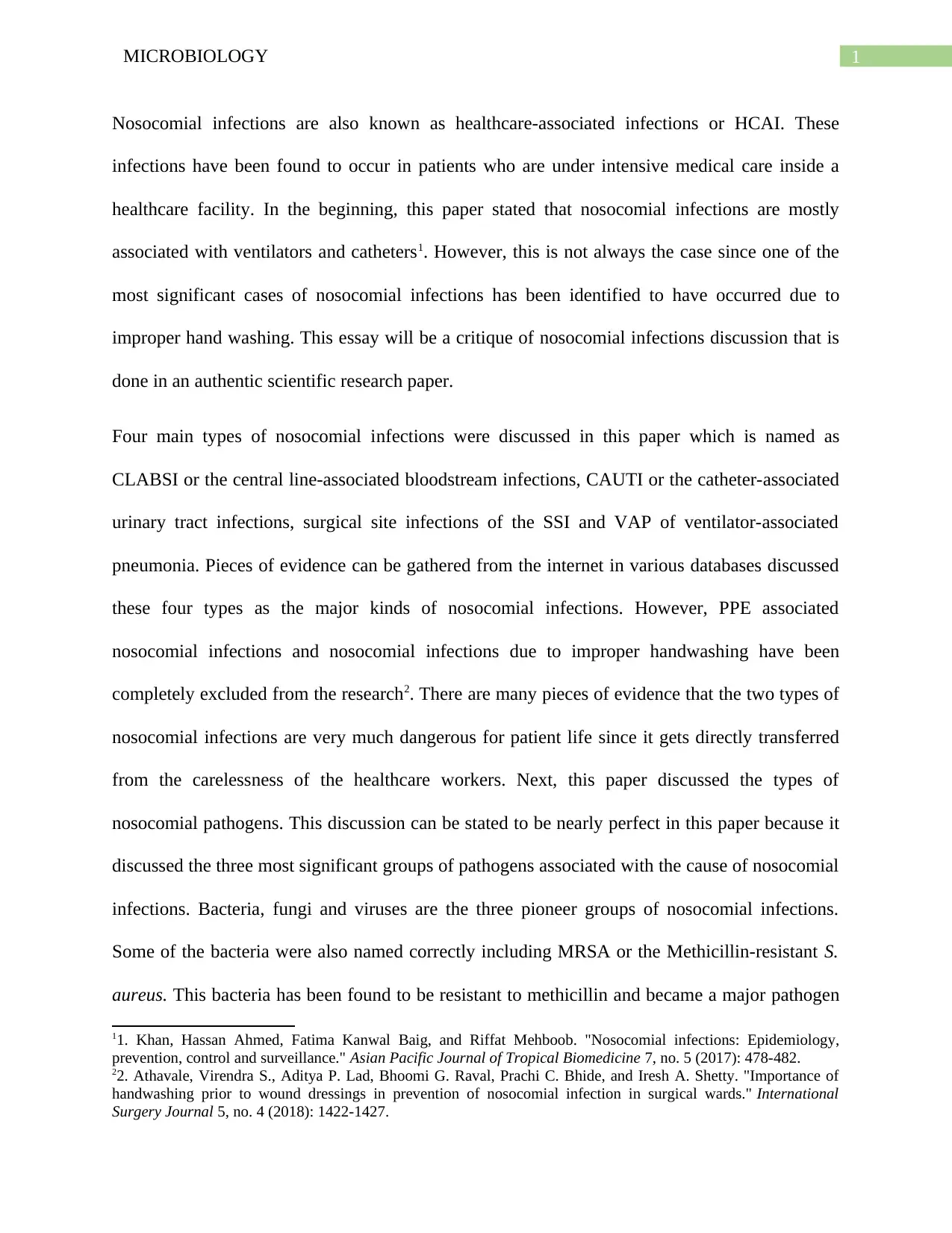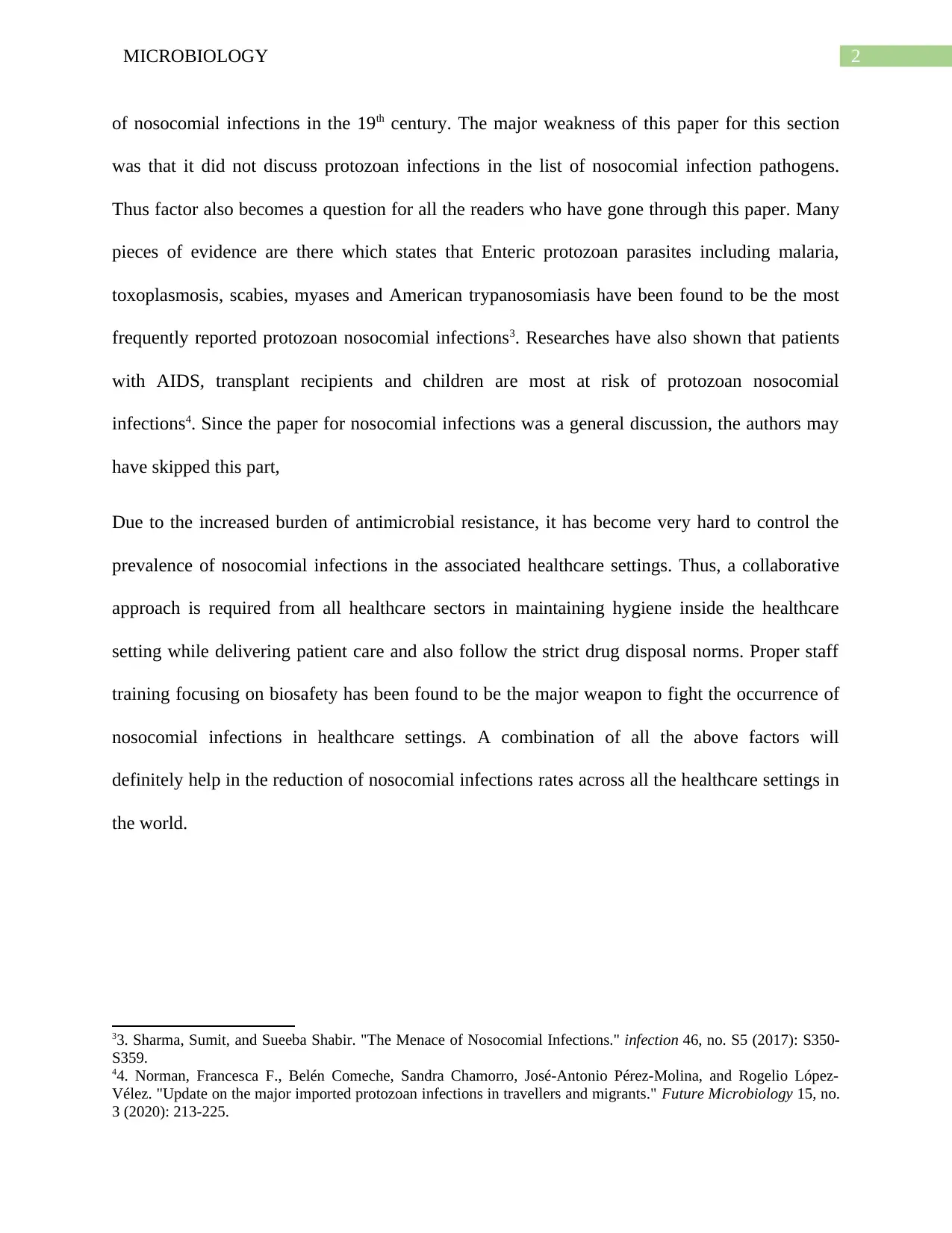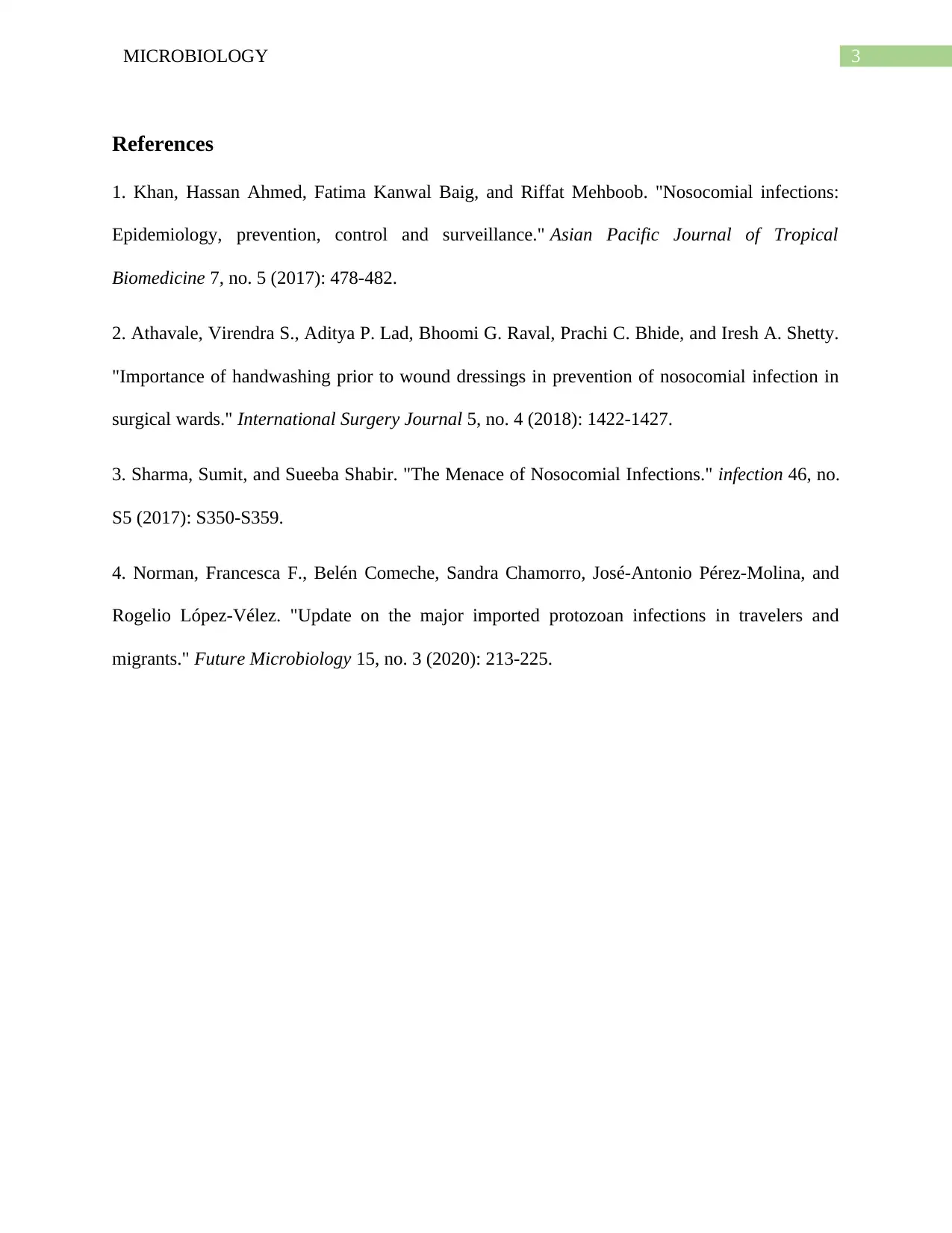Nosocomial Infections: Microbiology Critique Report Analysis
VerifiedAdded on 2022/09/13
|4
|742
|60
Report
AI Summary
This report presents a critique of nosocomial infections, also known as healthcare-associated infections (HCAI). It begins by highlighting the common occurrence of these infections in patients under intensive medical care and emphasizes that while ventilators and catheters are often associated with these infections, improper handwashing is a significant contributor. The report critiques a scientific research paper discussing four main types of nosocomial infections: central line-associated bloodstream infections (CLABSI), catheter-associated urinary tract infections (CAUTI), surgical site infections (SSI), and ventilator-associated pneumonia (VAP). It notes the exclusion of PPE-associated and handwashing-related infections, despite their danger. The report then discusses nosocomial pathogens, correctly identifying bacteria, fungi, and viruses as the main groups, including MRSA. However, it points out the omission of protozoan infections, such as malaria and toxoplasmosis, which are particularly risky for patients with AIDS, transplant recipients, and children. The report concludes by emphasizing the need for a collaborative approach, including improved hygiene, strict drug disposal norms, and staff training, to reduce nosocomial infections, given the increasing burden of antimicrobial resistance.
1 out of 4










![[object Object]](/_next/static/media/star-bottom.7253800d.svg)